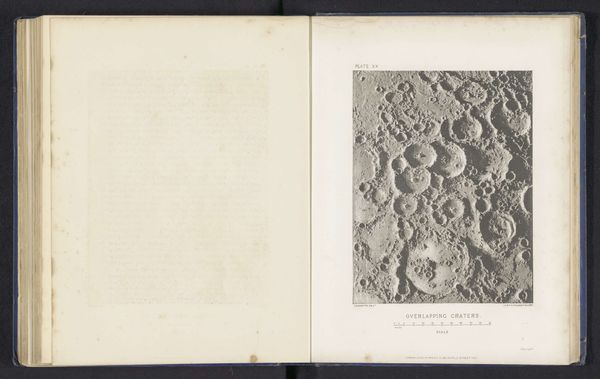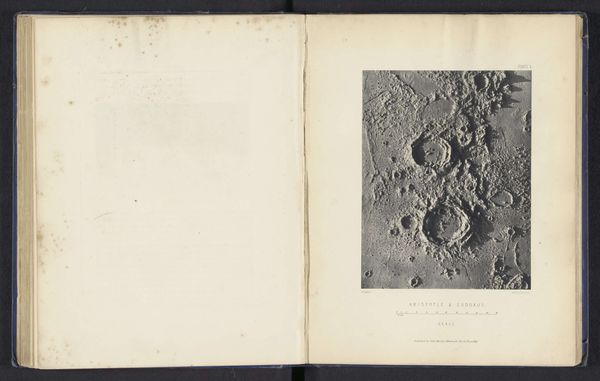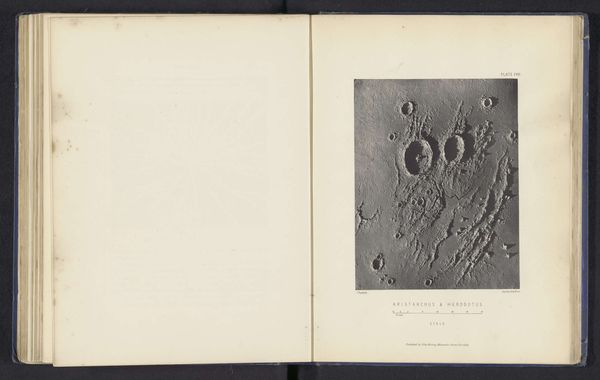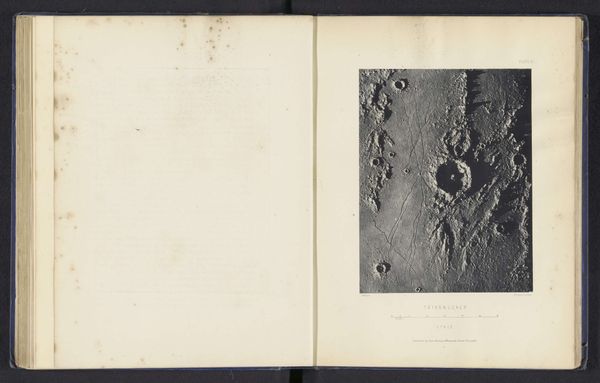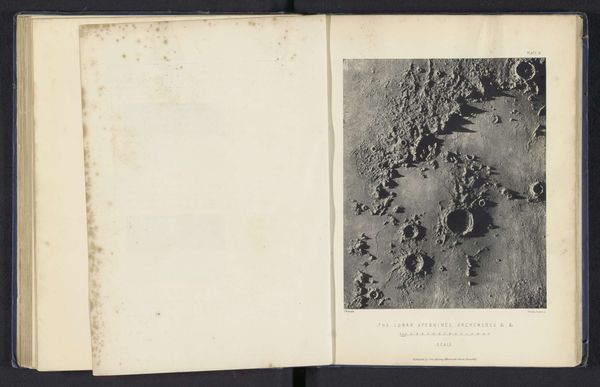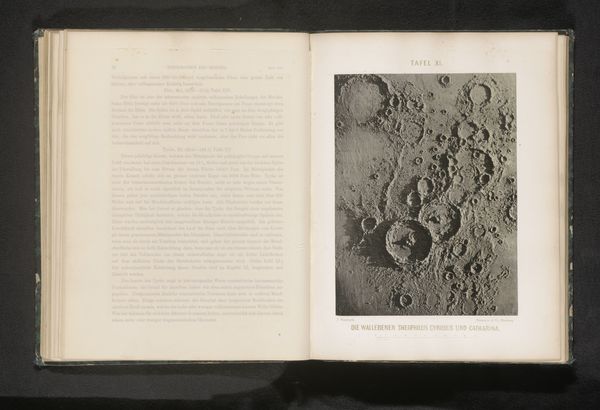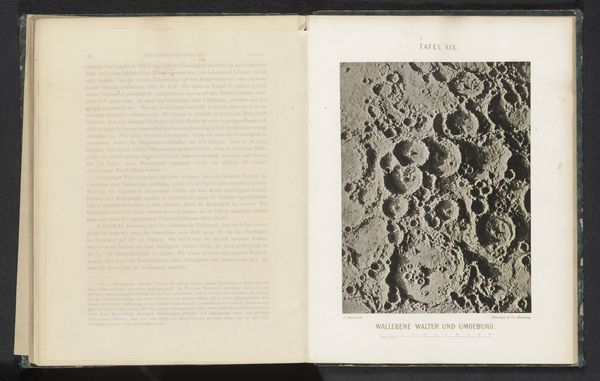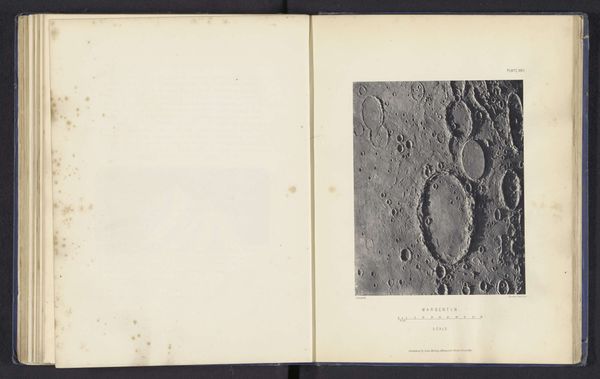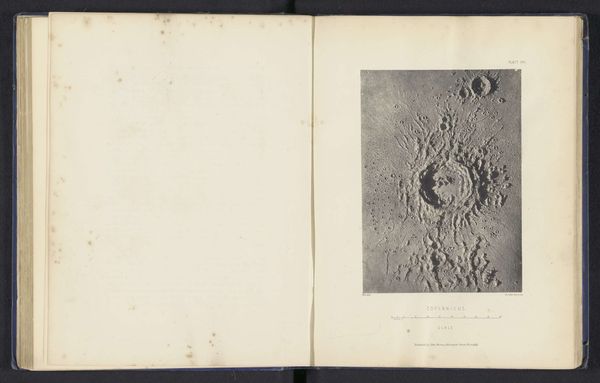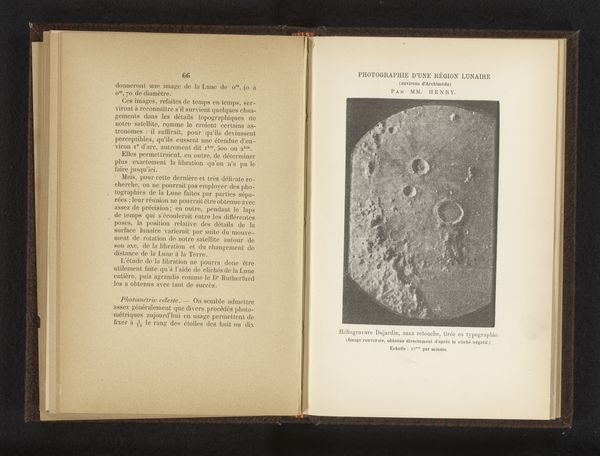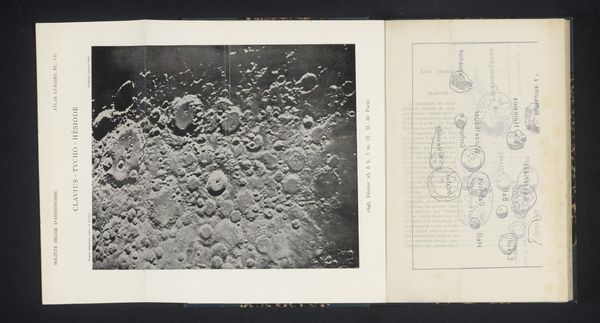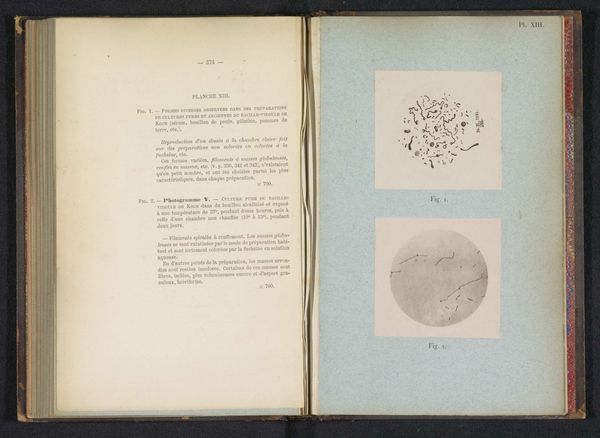
print, engraving
# print
#
landscape
#
academic-art
#
engraving
Dimensions: height 180 mm, width 134 mm
Copyright: Rijks Museum: Open Domain
Curator: It reminds me of looking at the skin on my elbows close up - only massively magnified, of course. Editor: We’re looking at James Nasmyth’s print, "Theophilus Cyrillus & Catharina," from 1873. It's an engraving, housed at the Rijksmuseum, which captures the lunar landscape. Theophilus, Cyrillus, and Catharina are all craters on the moon. Curator: It is incredible. Like a three-dimensional rendering in monochrome. I see this incredible array of textures and shadows— it's a desolate beauty, isn’t it? Editor: Absolutely desolate, yet profoundly shaped by violence – by countless impacts. This work aligns with broader scientific interests of the 19th century, fueling an ambition to map and understand the cosmos, of course. But more so, Nasmyth’s approach strikes me as especially significant; the landscape style that this work adopts echoes, perhaps, the human desire to contextualize this newly attainable knowledge. Curator: I agree. It’s almost like making the unfamiliar more familiar through art, taming it, but... did he really “tame it?” Looking at this now I can feel vertigo; thinking about outer space… Did he use real photographs, or did he invent this image? Editor: Neither entirely. Nasmyth constructed plaster models based on telescopic observations and then photographed the models under dramatic lighting to produce engravings like this. In many respects it is a form of simulation or augmented reality from nearly 150 years ago. His prints helped bring the moon closer to people's imagination. It became visible. Touchable almost. But who could touch it but men, perhaps, or white Europeans in particular? Who has ownership over even looking up at night? Curator: True! I like your twist at the end. Still, isn’t it remarkable how art and science can come together, in a rather poetic dance? Here he conjures a world that is at once, out there, and also completely... handmade. Editor: Art mediates our experience, definitely. Reflecting social and scientific contexts. The moon has been used across all continents to build up cultural theories surrounding identity, the land, the passing of time… Nasmyth tapped into a widespread fascination while imposing certain scientific frameworks. Curator: Fascinating. Thanks for this wider angle - from craters to culture... Editor: Thank you. These landscapes are worth dwelling on, beyond what is merely visible.
Comments
No comments
Be the first to comment and join the conversation on the ultimate creative platform.
